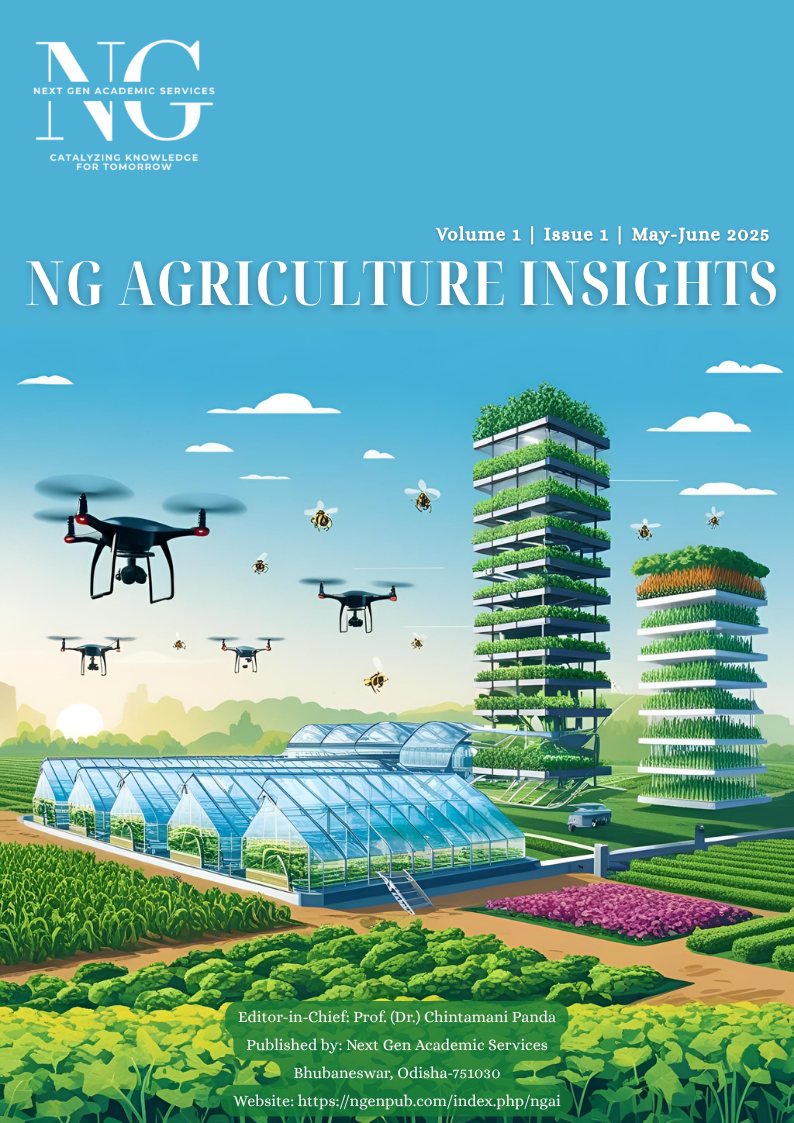Role of Honey Bees (Apis mellifera) in Enhancing Vegetable Seed Production
DOI:
https://doi.org/10.5281/zenodo.15633841Keywords:
Beekeeping, Genetic Diversity, Pollination, Seed Production, Vegetable CropsAbstract
When honey bees (Apis mellifera) pollinate, it helps vegetables produce more seeds and improves the yield, quality and different traits of the plants. It looks into the role of honey bees in pollinating vegetable crops, the causes of good pollination and options to support more of these bees for sustainable farming. The presence of honey bees is important for the pollination of cucurbits, brassicas, alliums, carrots, parsnips and solanaceous crops which results in greater seed yields, improved seeds, uniform maturity and wider genetic diversity. But their success may vary because of weather, pesticides, both native flowers and imports, the health of the bees and the presence of competing pollinators. Honey bee pollination can be improved by giving bees suitable nesting places, planting flowers that attract bees, using pesticides minimally and caring for the bee hives properly. A healthy ecosystem for bees depends on sustainable farming and active conservation which also boost vegetable seed production and make the farming system more resilient.
References
Albert, S. (n.d.). How vegetables are pollinated. Harvest to Table.
https://harvesttotable.com/how_vegetables_are_pollinated/
Bhatla, S. C., A. Lal, M., Shakya, R., & Bhatla, S. C. (2018). Pollination, fertilization and seed development. Plant physiology, development and metabolism, 821-856.
https://doi.org/10.1007/978-981-13-2023-1_26
Dash, L., Rout, S., Mishra, U. N., Sahoo, G., & Prusty, A. K. (2021). Insecticidal genes in pest management. Annals of the Romanian Society for Cell Biology, 25(6), 5601-5608.
Divekar, P. A., Mishra, A., & Kumar, R. (2024). Bee pollination in vegetables: current status, challenges and prospects. Circular Agricultural Systems, 4(1), e016.
https://doi.org/10.48130/cas-0024-0015
Howlett, B. G., Evans, L. J., Pattemore, D. E., & Nelson, W. R. (2017). Stigmatic pollen delivery by flies and bees: Methods comparing multiple species within a pollinator community. Basic and Applied Ecology, 19, 19-25.
https://doi.org/10.1016/j.baae.2016.12.002
Kumar, S., Sripathy, K. V., Udaya Bhaskar, K., & Vinesh, B. (2023). Principles of Quality Seed Production. In Seed Science and Technology: Biology, Production, Quality (pp. 109-131). Singapore: Springer Nature Singapore. https://doi.org/10.1007/978-981-19-5888-5_6
Mishra, M. G., Singh, P. K., Pandey, P., & Sohi, M. A. (2023). Breeding Approaches for Vegetable Crops.
Murphy, S. (2022). The role of wind pollination in crop plants. Promoting Pollination and Pollinators in Farming, 126, 120.
Nagaraja, N., & Rajagopal, D. (2019). Honey Bees: diseases, parasites, pests, predators and their management. MJP publisher.
Neov, B., Georgieva, A., Shumkova, R., Radoslavov, G., & Hristov, P. (2019). Biotic and Abiotic Factors Associated with Colonies Mortalities of Managed Honey Bee (Apis mellifera). Diversity, 11(12), 237.
https://doi.org/10.3390/d11120237
Padhy, D., Satapathy, A., & Nanda, C. (2025). From hive to hope: role of beekeeping in empowering tribal women. NG Agricultural Sciences, 1(2), 35-53. https://doi.org/10.5281/zenodo.15305162
Tripathy, B., Rout, S., Mishra, U. N., Sahoo, G., Pradhan, K., Prusty, A. K., & Dash, L. (2021). Vegetables: A potential source of nutraceuticals. Annals of the Romanian Society for Cell Biology, 25, 17921–17941.
Downloads
Published
Issue
Section
License
Copyright (c) 2025 Manisa Manjari Sahoo, Hritik Nayak, Gayatri Sinha

This work is licensed under a Creative Commons Attribution 4.0 International License.





